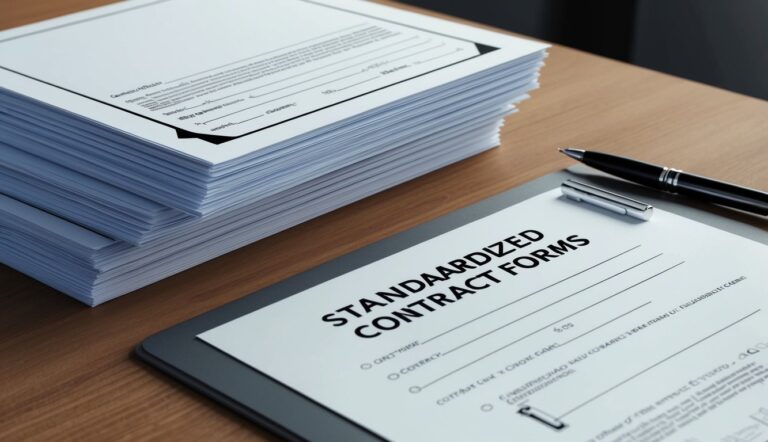Understanding Disability Insurance
Disability insurance provides income protection if you can’t work due to illness or injury.
It replaces a portion of your income, typically between 40% to 70%, depending on the policy.
There are two main types: short-term and long-term.
Short-term Disability Insurance:
- Covers a few months up to one year.
- Useful for temporary issues like minor surgeries or short illnesses.
Long-term Disability Insurance:
- Can cover several years or even until retirement.
- Ideal for more serious conditions.
Key Terms:
- Elimination period: The waiting time before benefits start, ranging from a few days to several months.
- Benefit period: The length of time you’ll receive payments.
- Premium: Regular payments made to maintain coverage. Learn more about premiums.
How It Works:
When you become unable to work, you file a claim with your insurance carrier.
An underwriting process determines your eligibility.
If approved, you’ll start receiving monthly benefits after the elimination period.
Your employer may offer employer-sponsored coverage, sometimes at no extra cost to you.
Individual policies are also available if you need more coverage.
Additional Coverage:
- Social Security Disability Insurance (SSDI): Managed by the Social Security Administration.
- Workers’ Compensation: For injuries sustained at work.
Disability insurance helps ensure financial stability, making sure you can pay your bills and maintain your lifestyle even if you’re unable to work.
It acts as a safeguard for your paycheck, offering income protection when you need it most.
Disability Benefits and Programs
Disability benefits provide financial assistance to those unable to work due to medical conditions. Social Security Disability Insurance (SSDI) and Supplemental Security Income (SSI) are two main programs managed by the Social Security Administration (SSA).
SSDI benefits are based on your work history.
You must have worked in jobs covered by Social Security and have a medical condition that meets the SSA’s definition of disability.
If eligible, you can receive monthly benefits to cover living expenses.
SSI offers benefits to disabled individuals with limited income and resources.
This program supports both adults and children who meet financial and medical requirements.
The medical criteria are the same for SSDI and SSI.
Workers’ compensation is another form of disability benefit.
This program helps you if you suffer from work-related injuries.
It provides wage replacement and medical benefits.
Employers usually pay for workers’ compensation through insurance premiums.
Disability income insurance is a private insurance option that provides financial support if you become disabled and cannot work.
Benefits can be either short-term or long-term, depending on the policy.
This option can serve as an alternative or supplement to SSDI and SSI.
Veterans with disabilities may be eligible for benefits through the Department of Veterans Affairs.
These benefits are specifically tailored to support service-related disabilities and injuries.
State agencies may also offer additional disability benefits programs.
These programs vary widely, so it’s important to check with your state agency to understand what options are available to you.
For those interested in alternatives, you might consider portable disability insurance.
Portable plans stay with you even if you change jobs, offering flexibility that standard employer-based plans might not provide.
Planning and Protecting with Disability Insurance

To plan effectively with disability insurance, you need to understand your potential income risks and needs.
When you can’t work due to disability, this insurance can help replace your lost income.
Begin by evaluating your lifestyle and financial needs.
Determine how much of your paycheck you’ll need to cover essential expenses.
Consider both short-term disability insurance and long-term disability insurance.
Short-term policies typically cover a portion of your income for a few months, while long-term policies may provide benefits for several years or until retirement.
Types of Coverage:
- Group Coverage: Often provided by your employer. This coverage might be cheaper but less personalized.
- Individual Coverage: Purchased directly by you. Offers tailored benefits based on your specific needs.
Factors Affecting Premiums:
- Age: Younger people usually pay lower premiums.
- Job: Riskier jobs may lead to higher premiums.
- Health: Pre-existing conditions can affect rates.
Understand your employer-sponsored coverage and decide if additional individual disability insurance is necessary.
Employer plans might not be portable, meaning you can’t take them with you if you change jobs.
Individual plans are portable and can offer more comprehensive coverage.
Key Terms:
- Benefit Period: The length of time benefits are paid.
- Premium: Monthly payments for maintaining the policy.
- Rider: Optional add-ons to a policy for additional benefits.
Having the right disability insurance can protect your income and ensure your financial stability during unforeseen circumstances.
Plan carefully to choose the best disability coverage for your needs.
Frequently Asked Questions

Disability insurance helps support you financially if you are unable to work due to illness or injury.
Below are answers to some of the most common questions about disability insurance.
Who is eligible for disability insurance?
Most people who work and earn a regular income are eligible for disability insurance.
Eligibility often depends on your employment status and the type of work you do.
Some policies may have specific requirements, such as minimum working hours or a waiting period.
What are the types of disability insurance available?
There are two main types of disability insurance: short-term and long-term.
Short-term disability insurance typically covers a few months, while long-term disability insurance can last for several years or until retirement.
Each type has specific terms and conditions.
How does disability insurance differ from health insurance?
Disability insurance provides income replacement if you cannot work due to a disability.
In contrast, health insurance covers medical expenses like doctor visits, hospital stays, and medications.
Disability insurance focuses on maintaining your financial stability during periods when you can’t earn a regular income.
What are the common exclusions in a disability insurance policy?
Exclusions vary by policy, but common ones include pre-existing conditions, self-inflicted injuries, and disabilities resulting from criminal activities.
Some policies may also exclude disabilities caused by high-risk activities or certain mental health conditions.
How is the benefit amount determined for disability insurance?
The benefit amount typically depends on your income and the terms of your policy.
Long-term disability insurance often replaces 60% to 70% of your base salary, while short-term disability may cover a similar range for a shorter time.
Some policies have a cap on the maximum benefit amount.
What is the typical duration for disability insurance benefits?
The duration of benefits varies by policy.
Short-term disability insurance usually provides benefits for three to six months.
Long-term disability insurance can last several years, or until you reach retirement age.
It’s important to understand the specific terms of your policy.






